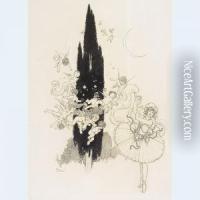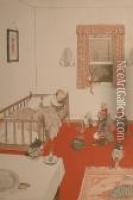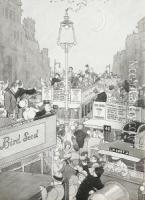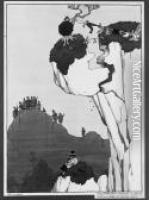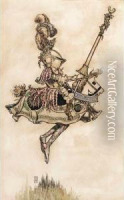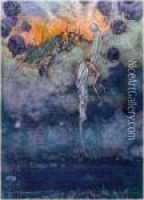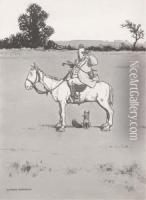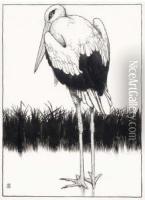William Heath Robinson Paintings
William Heath Robinson was a British cartoonist and illustrator, born on May 31, 1872, in London. He was part of an artistic family, with both of his brothers also pursuing careers in the arts. Robinson is best known for creating intricate and whimsical drawings of complicated machines designed to perform simple tasks in indirect ways - these have become colloquially known as 'Heath Robinson contraptions' and have even been compared to the work of the American cartoonist Rube Goldberg, who created similar designs.
Robinson initially aimed to become a landscape painter, studying at the Royal Academy Schools, but he shifted to book illustration, which was more financially rewarding. He illustrated a range of texts including Shakespeare's plays and children's books, and his work was characterized by a delicate, humorous style that became very popular.
During World War I, he created a series of satirical cartoons that depicted fantastical machines intended for use in the war effort, which further established his reputation. His work was not just limited to humorous illustrations; he also produced serious political cartoons and even designed advertising material.
In the interwar period, Robinson continued to work, with his illustrations appearing in magazines and books, and his cartoons reflecting the period's concerns and technological fascinations. He was known for his gentle satire and his capacity to find humor in the everyday.
Robinson's legacy has endured, with his name entering the English language as a term for any overly complex and implausible contraption. His imaginative creations have inspired inventors and storytellers alike and his contribution to British art and humor has been widely acknowledged. William Heath Robinson passed away on September 13, 1944, but his work continues to be celebrated for its inventiveness and wit.



